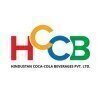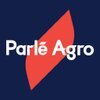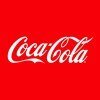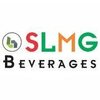Filter interviews by
Diageo Data Scientist Interview Questions, Process, and Tips
Diageo Data Scientist Interview Experiences
2 interviews found
(5 Questions)
- Q1. What is autocorrelation?
- Ans.
Autocorrelation is a statistical concept that measures the relationship between a variable's current value and its past values.
Autocorrelation is the correlation of a signal with a delayed copy of itself.
It is used to detect patterns or trends in time series data.
Positive autocorrelation indicates a positive relationship between current and past values, while negative autocorrelation indicates a negative relationship.
F...
- Q2. Linear Regression Assumptions
- Ans.
Linear regression assumptions include linearity, independence, homoscedasticity, and normality.
Assumption of linearity: The relationship between the independent and dependent variables is linear.
Assumption of independence: The residuals are independent of each other.
Assumption of homoscedasticity: The variance of the residuals is constant across all levels of the independent variables.
Assumption of normality: The resid...
- Q3. P value in simple terms
- Ans.
P value is a measure used in hypothesis testing to determine the significance of the results.
P value is the probability of obtaining results at least as extreme as the observed results, assuming the null hypothesis is true.
A small P value (typically ≤ 0.05) indicates strong evidence against the null hypothesis, leading to its rejection.
A large P value (> 0.05) suggests weak evidence against the null hypothesis, lead...
- Q4. Bagging and Boosting algorithms
- Q5. Multicollinearity
Skills evaluated in this interview
I appeared for an interview in Dec 2024.
(2 Questions)
- Q1. What are the methods for evaluating machine learning models?
- Ans.
Methods for evaluating machine learning models include accuracy, precision, recall, F1 score, ROC curve, and confusion matrix.
Accuracy: measures the proportion of correct predictions out of the total predictions made by the model.
Precision: measures the proportion of true positive predictions out of all positive predictions made by the model.
Recall: measures the proportion of true positive predictions out of all actual...
- Q2. What is the definition of standard deviation?
- Ans.
Standard deviation is a measure of the amount of variation or dispersion of a set of values.
Standard deviation is calculated as the square root of the variance.
It indicates how spread out the values in a data set are around the mean.
A low standard deviation means the values are close to the mean, while a high standard deviation means the values are more spread out.
For example, in a data set of test scores, a high stand...
Interview questions from similar companies

I applied via Campus Placement and was interviewed in Jan 2016. There were 3 interview rounds.
Interview Questionnaire
2 Questions
- Q1. Behavioral questions
- Q2. Tell me about yourself? Resume questions If you had to setup an analytics division for the company which country would you choose and on what parameters More of a general discussion
Interview Preparation Tips

I applied via Referral and was interviewed before Apr 2021. There were 4 interview rounds.

(4 Questions)
- Q1. What was your projrct about ?
- Q2. What approach did you use and why ?
- Ans.
I used a combination of supervised and unsupervised learning approaches to analyze the data.
I used supervised learning to train models for classification and regression tasks.
I used unsupervised learning to identify patterns and relationships in the data.
I also used feature engineering to extract relevant features from the data.
I chose this approach because it allowed me to gain insights from the data and make predicti
- Q3. Why was this model/ approach used instead of others ?
- Ans.
The model/approach was chosen based on its accuracy, interpretability, and scalability.
The chosen model/approach had the highest accuracy compared to others.
The chosen model/approach was more interpretable and easier to explain to stakeholders.
The chosen model/approach was more scalable and could handle larger datasets.
Other models/approaches were considered but did not meet the requirements or had limitations.
The chos...
- Q4. How did you prevent your model from overfitting ? What did you do when it was underfit ?
- Ans.
To prevent overfitting, I used techniques like regularization, cross-validation, and early stopping. For underfitting, I tried increasing model complexity and adding more features.
Used regularization techniques like L1 and L2 regularization to penalize large weights
Used cross-validation to evaluate model performance on different subsets of data
Used early stopping to prevent the model from continuing to train when perfo...
If you were to design a tool that splits the budget across brands and vehicles, how would you go about this.
Apart from this, i was asked about why i was joining this company.
(2 Questions)
- Q1. What are your career aspirations ?
- Q2. Couple of more case studies
Interview Preparation Tips
- Machine Learning
- Data Analysis
- Data Visualization
- SQL
2. Try to understand the case study by asking more questions before solving it
3. Ask for time to think if you need it
Skills evaluated in this interview

I applied via Naukri.com and was interviewed in Jun 2022. There were 4 interview rounds.

(1 Question)
- Q1. Bio. SQL Basics. Python Basics. Projects done.
(1 Question)
- Q1. Similar to Round 1 along coding basics and ML
Decide which video clip will work at a campaign
Interview Preparation Tips

I applied via Naukri.com and was interviewed before Nov 2021. There were 5 interview rounds.

(1 Question)
- Q1. 1. Questions from time series forecasting. 2. How to forecast demand if we have no data like for the period of Covid pandemic. 3. Questions from NLP.
(1 Question)
- Q1. Scenario based question with technical challenges.
(1 Question)
- Q1. Questions from statistics
(1 Question)
- Q1. It was mostly salary negotiation.
Interview Preparation Tips


Coding test link will sent and involves python and data science questions
(1 Question)
- Q1. Technical lead will ask questions in ML or data science depending the role you applied
Their will case study question which you need to answer from technical manager.
(1 Question)
- Q1. Just normal HR discussion on salary
Interview Preparation Tips

I applied via Approached by Company and was interviewed in Nov 2023. There were 3 interview rounds.
(2 Questions)
- Q1. Explain chi square distribution. What are the assumptions involved?
- Ans.
Chi square distribution is a probability distribution used in statistical tests to determine the significance of relationships between categorical variables.
Chi square distribution is a continuous probability distribution that is used in statistical tests such as the chi square test.
It is skewed to the right and its shape is determined by the degrees of freedom.
Assumptions involved in chi square distribution include: r...
- Q2. Explain different clustering algorithms
- Ans.
Clustering algorithms group similar data points together based on certain criteria.
K-means: partitions data into K clusters based on centroids
Hierarchical clustering: creates a tree of clusters
DBSCAN: density-based clustering algorithm
Mean Shift: shifts centroids to maximize data points within a certain radius
Gaussian Mixture Models: assumes data points are generated from a mixture of Gaussian distributions
(1 Question)
- Q1. Deep dive into clustering and bagging boosting algorithms
- Ans.
Clustering and bagging boosting algorithms are popular techniques in machine learning for grouping data points and improving model accuracy.
Clustering algorithms like K-means, DBSCAN, and hierarchical clustering are used to group similar data points together based on certain criteria.
Bagging algorithms like Random Forest create multiple subsets of the training data and train individual models on each subset, then combi...
(1 Question)
- Q1. Different situation based questions
Interview Preparation Tips
Skills evaluated in this interview

Easy sql and python questions
(2 Questions)
- Q1. Librarires Used
- Ans.
I have experience using libraries such as Pandas, NumPy, Scikit-learn, Matplotlib for data analysis and visualization.
Pandas for data manipulation
NumPy for numerical operations
Scikit-learn for machine learning algorithms
Matplotlib for data visualization
- Q2. Previous work experiemce

Included aptitude, coding, english grammar, technical questions
Diageo Interview FAQs
Tell us how to improve this page.
Diageo Interviews By Designations
- Diageo Senior Associate Interview Questions
- Diageo Analyst Interview Questions
- Diageo Sales Executive Interview Questions
- Diageo Senior Executive Interview Questions
- Diageo Data Scientist Interview Questions
- Diageo Credit Controller Interview Questions
- Diageo Marketing Manager Interview Questions
- Diageo Manager Interview Questions
- Show more
Interview Questions for Popular Designations
- Senior Data Scientist Interview Questions
- Decision Scientist Interview Questions
- Jr. Data Scientist Interview Questions
- Associate Data Scientist Interview Questions
- Data Scientist Intern Interview Questions
- Lead Data Scientist Interview Questions
- Trainee Decision Scientist Interview Questions
- Research Scientist Interview Questions
- Show more
Diageo Data Scientist Interview Process
based on 2 interviews
Interview experience
Interview Questions from Similar Companies
Diageo Data Scientist Reviews and Ratings
based on 1 review
Rating in categories
|
Analyst
234
salaries
| ₹3.4 L/yr - ₹8.5 L/yr |
|
Sales Executive
180
salaries
| ₹2.4 L/yr - ₹6.7 L/yr |
|
Assistant Manager
171
salaries
| ₹6.7 L/yr - ₹19 L/yr |
|
Senior Analyst
123
salaries
| ₹4.1 L/yr - ₹10.5 L/yr |
|
Senior Manager
113
salaries
| ₹21 L/yr - ₹50 L/yr |

Varun Beverages

Hindustan Coca Cola Beverages

Parle Agro

AB InBev India
- Home >
- Interviews >
- Diageo Interview Questions >
- Diageo Data Scientist Interview Questions





















